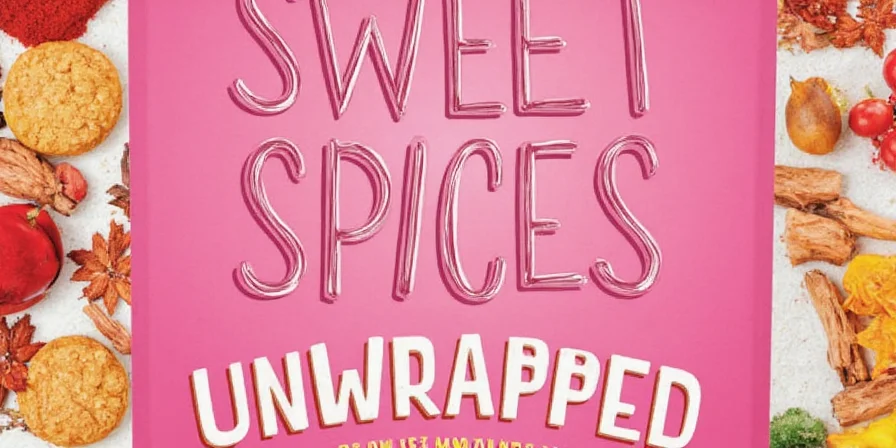
Table of Contents
- Your Quick Guide to Sweet Spices
- Top 5 Sweet Spices Every Home Cook Needs
- Practical Cooking Tips for Everyday Use
- Sweet Spices Science Made Simple
- Fun Facts to Impress Your Friends
- Real Questions Home Cooks Ask
- Conclusion: Simple Ways to Transform Your Cooking
Your Quick Guide to Sweet Spices
Sweet spices aren't actually sweet like sugar - they're warm, fragrant spices that add depth and complexity to both sweet and savory dishes. If you've ever wondered why pumpkin pie tastes "sweet" without extra sugar, or why your beef stew tastes richer with certain spices, you're experiencing the magic of sweet spices. These are essential tools for any home cook looking to elevate everyday cooking without complicated techniques.

Unlike hot spices that burn, sweet spices wrap your taste buds in warmth. They've been used for centuries in everything from apple pie to curry. The good news? You don't need chemistry knowledge to use them effectively. Let's cut through the confusion and give you exactly what you need to know.
Top 5 Sweet Spices Every Home Cook Needs
Forget expensive specialty spices - these five basics will transform your cooking immediately. Keep them in small quantities (they lose potency over time) and store them in a cool, dark place.
- Cinnamon: Your baking essential and coffee booster
- Nutmeg: The secret weapon for creamy sauces and holiday dishes
- Allspice: One spice that tastes like cinnamon, cloves, and nutmeg combined
- Cardamom: Perfect for cookies, rice pudding, and even coffee
- Cloves: The holiday spice for ham, cider, and baked apples

Which Sweet Spice Should You Use When?
| Spice | When to Use It | How Much to Start With | Pairings That Work |
|---|---|---|---|
| Cinnamon | Oatmeal, baked goods, coffee, roasted carrots | 1/4 tsp per serving | Apples, sweet potatoes, chocolate |
| Nutmeg | Béchamel sauce, mashed potatoes, eggnog | Pinch (1/16 tsp) per serving | Cheese, spinach, cream-based dishes |
| Allspice | Meat rubs, stews, baked apples | 1/4 tsp per pound of meat | Pork, root vegetables, tomatoes |
| Cardamom | Coffee, rice pudding, sweet breads | 3-4 pods or 1/4 tsp ground | Lemons, oranges, vanilla |
| Cloves | Holiday ham, mulled wine, baked apples | 2-3 whole cloves per serving | Oranges, apples, cinnamon |
Practical Cooking Tips for Everyday Use
Stop guessing how to use sweet spices with these simple, actionable techniques anyone can master:
- For Baking: Add cinnamon and allspice at the beginning, but wait to add nutmeg and cardamom until the end for brighter flavor
- For Savory Dishes: Add 1/4 tsp cinnamon to tomato sauce or chili for surprising depth (don't worry - it won't taste like dessert!)
- Revive Old Spices: Toast stale spices in a dry pan for 1-2 minutes until fragrant - instantly boosts flavor
- Sugar Reduction Trick: Replace 1/4 cup sugar with 1 tsp cinnamon + 1/4 tsp nutmeg in baked goods
- Perfect Mulled Wine: Tie 5 cloves, 1 cinnamon stick, and 3 cardamom pods in cheesecloth for easy removal
Sweet Spices Science Made Simple
You don't need a chemistry degree to understand why sweet spices work. Here's what actually matters for home cooking:
- Cinnamon makes food taste sweeter without adding sugar - just 1/2 tsp can make your coffee taste sweeter
- Nutmeg works magic in creamy dishes because it enhances how we perceive richness
- Cloves last longer than other spices - they stay fresh for up to 2 years when stored properly
Professional chefs use these properties to create dishes that taste more complex with fewer ingredients. The key is using the right amount - too much creates bitterness rather than sweetness.

Fun Facts to Impress Your Friends
- One cinnamon stick lasts longer than ground cinnamon - use it to stir your coffee for gradual flavor release
- Nutmeg was once worth more than gold - a pound cost as much as a sheep in the 1600s
- Cardamom is the world's third most expensive spice after saffron and vanilla
- Allspice got its name because it tastes like a blend of cinnamon, cloves, and nutmeg
- Cloves were used as natural toothache relief long before modern dentistry

Real Questions Home Cooks Ask
What's the easiest sweet spice to start with?
How can I tell if my sweet spices are still good?
Can I use sweet spices in non-dessert recipes?
Which sweet spice works best with coffee?
What's the difference between Ceylon and regular cinnamon?
Conclusion: Simple Ways to Transform Your Cooking
You don't need fancy techniques to use sweet spices effectively. Start with cinnamon in your morning routine, add nutmeg to creamy dishes, and experiment with one new spice each week. The secret isn't complicated science - it's understanding which spice works for which dish and using just enough to enhance, not overpower.
Remember these three simple rules: 1) Start with less than you think you need, 2) Add sweet spices early in cooking for savory dishes but late for desserts, 3) Store spices away from heat and light. Within weeks, you'll develop an intuitive sense for when and how much to use - and your cooking will never be the same.











 浙公网安备
33010002000092号
浙公网安备
33010002000092号 浙B2-20120091-4
浙B2-20120091-4